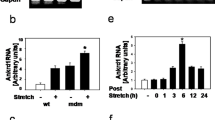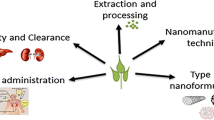Abstract
Snakebites caused by the genus Bothrops are often associated with severe and complex local manifestations such as edema, pain, hemorrhage, and myonecrosis. Conventional treatment minimizes the systemic effects of venom; however, their local action is not neutralized. The purpose of this study was to evaluate the effect of photobiomodulation (PBM) on C2C12 muscle cells exposed to B. jararaca, B. jararacussu, and B. moojeni venoms on events involved in cell death and the release of inflammatory mediators. Cells were exposed to venoms and immediately irradiated with low-level laser (LLL) application in continuous wave at the wavelength of 660 nm, energy density of 4.4 J/cm2, power of 10 mW, area of 0.045 cm2, and time of 20 s. Cell integrity was analyzed by phase contrast microscope and cell death was performed by flow cytometry. In addition, interleukin IL1-β, IL-6, and IL-10 levels were measured in the supernatant. Our results showed that the application of PBM increases cell viability and decreases cell death by apoptosis and necrosis. Moreover, the release of pro-inflammatory interleukins was also reduced. The data reported here indicate that PBM resulted in cytoprotection on myoblast C2C12 cells after venom exposure. This protection involves the modulation of cell death mechanism and decreased pro-inflammatory cytokine release.



Similar content being viewed by others
References
Organization WH. Neglected tropical diseases (2017) [Available from: http://www.who.int/neglected_diseases/diseases/en/ Accessed 6 June 2019
Bagcchi S (2015) Experts call for snakebite to be re-established as a neglected tropical disease. BMJ 351:h5313
Bochner R, Struchiner CJ (2003) Snake bite epidemiology in the last 100 years in Brazil: a review. Cad Saude Publica 19(1):7–16
Gois PHF, Martines MS, Ferreira D, Volpini R, Canale D, Malaque C, Crajoinas R, Girardi ACC, Shimizu MHM, Seguro AC (2017) Allopurinol attenuates acute kidney injury following Bothrops jararaca envenomation. PLoS Negl Trop Dis 11(11):e0006024
Mamede CC, de Sousa BB, Pereira DF, Matias MS, de Queiroz MR, de Morais NC, Vierira SA, Stanziola L, Oliveira F (2016) Comparative analysis of local effects caused by Bothrops alternatus and Bothrops moojeni snake venoms: enzymatic contributions and inflammatory modulations. Toxicon 117:37–45
Amorim FG, Morandi-Filho R, Fujimura PT, Ueira-Vieira C, Sampaio SV (2017) New findings from the first transcriptome of the Bothrops moojeni snake venom gland. Toxicon 140:105–117
Gutiérrez JM (2016) Understanding and confronting snakebite envenoming: the harvest of cooperation. Toxicon 109:51–62
Hernández R, Cabalceta C, Saravia-Otten P, Chaves A, Gutiérrez JM, Rucavado A (2011) Poor regenerative outcome after skeletal muscle necrosis induced by Bothrops asper venom: alterations in microvasculature and nerves. PLoS One 6(5):e19834
Camey KU, Velarde DT, Sanchez EF (2002) Pharmacological characterization and neutralization of the venoms used in the production of bothropic antivenom in Brazil. Toxicon 40(5):501–509
Gutiérrez JM, Lomonte B, León G, Alape-Girón A, Flores-Díaz M, Sanz L, Angulo Y, Calvete JJ (2009) Snake venomics and antivenomics: proteomic tools in the design and control of antivenoms for the treatment of snakebite envenoming. J Proteome 72:165–182
Queiroz GP, Pessoa LA, Portaro FC, Furtado MF, Tambourgi DV (2008) Interspecific variation in venom composition and toxicity of Brazilian snakes from Bothrops genus. Toxicon 52(8):842–851
Zamunér SR, da Cruz-Höfling MA, Corrado AP, Hyslop S, Rodrigues-Simioni L (2004) Comparison of the neurotoxic and myotoxic effects of Brazilian Bothrops venoms and their neutralization by commercial antivenom. Toxicon 44(3):259–271
Calvete JJ, Sanz L, Pérez A, Borges A, Vargas AM, Lomonte B, Ângulo Y, Gutiérrez JM, Chalkidis HM, Mourão RH, Furtado MF, Moura-Da-Silva AM (2011) Snake population venomics and antivenomics of Bothrops atrox: paedomorphism along its transamazonian dispersal and implications of geographic venom variability on snakebite management. J Proteome 74:510–527
Sousa LF, Nicolau CA, Peixoto OS, Bernardoni JL, Oliveira SS, Portes-Junior JÁ, Mourão RHV, Lima-dos-Santos I, Sano-Martins IS, Chalkidis HM, Valente RH, Moura-da-Silva AM (2013) Comparison of phylogeny, venom composition and neutralization by antivenom in diverse species of Bothrops complex. PLoS Negl Trop Dis 7(9):e2442
Nadur-Andrade N, Barbosa AM, Carlos FP, Lima CJ, Cogo JC, Zamuner SR (2012) Effects of photobiostimulation on edema and hemorrhage induced by Bothrops moojeni venom. Lasers Med Sci 27(1):65–70
Nadur-Andrade N, Dale CS, Oliveira VR, Toniolo EF, Feliciano RD, da Silva JA, Zamuner SR (2016) Analgesic effect of photobiomodulation on Bothrops moojeni venom-induced hyperalgesia: a mechanism dependent on neuronal inhibition, cytokines and kinin receptors modulation. PLoS Negl Trop Dis 10(10):e0004998
Silva LM, Silva CA, Silva A, Vieira RP, Mesquita-Ferrari RA, Cogo JC, Zamuner SR (2016) Photobiomodulation protects and promotes differentiation of C2C12 myoblast cells exposed to snake venom. PLoS One 11(4):e0152890
Dourado DM, Matias R, Barbosa-Ferreira M, da Silva BAK, de Araujo Isaias Muller J, Vieira WF, Cruz-Höfling MA (2017) Effects of photobiomodulation therapy on Bothrops moojeni snake-envenomed gastrocnemius of mice using enzymatic biomarkers. Lasers Med Sci 32(6):1357–1366
Santos ASD, Guimarães-Sousa L, Costa MS, Zamuner LF, Sousa NC, Hyslop S, Soares AM, Chavantes MC, Cogo JC, Zamuner SR (2018) Photobiomodulation of local alterations induced by BthTX-I, a phospholipase A2 myotoxin from Bothrops jararacussu snake venom: in vivo and in vitro evaluation. Int J Biol Macromol 107(Pt B):2020–2025
Dourado DM, Fávero S, Baranaukas V, Cruz-Hofling MA (2003) Effects of the Ga-As laser irradiation on myonecrosis caused by Bothrops moojeni snake venom. Lasers Surg Med 33(5):352–357
Barbosa AM, Villaverde AB, Sousa LG, Munin E, Fernandez CM, Cogo JC, Zamuner SR (2009) Effect of low-level laser therapy in the myonecrosis induced by Bothrops jararacussu snake venom. Photomed Laser Surg 27(4):591–597
Franco AT, Silva LM, Costa MS, Zamuner SF, Vieira RP, de Fatima Pereira Teixeira C, Zamuner SR (2016) Effect of photobiomodulation on endothelial cell exposed to Bothrops jararaca venom. Lasers Med Sci 31(5):1017–1025
Barbosa AM, Villaverde A, Guimarães-Sousa L, Soares A, Zamuner S, Cogo J, Zamuner SR (2010) Low-level laser therapy decreases local effects induced by myotoxinsisolated from Bothrops jararacussu snake venom. J Venom Anim Toxins Incl Trop Dis 16(3):470–479
Crowley LC, Marfell BJ, Scott AP, Waterhouse NJ (2016) Quantitation of apoptosis and necrosis by annexin V binding, propidium iodide uptake, and flow cytometry. Cold Spring Harb Protoc 11:957–953
Cardoso JLC, Fan HW, Franca FOS, Jorge MT, Leite RP, Nishioka SA, Avila A, SanoMartins IS, Tomy SC, Santoro ML, Chudzinski AM, Castro SCB, Kamiguti AS, Kelen EMA, Hirata MH, Mirandola RMS, Theakston RDG, Warrell DA (1993) Randomized comparative trial of three antivenoms in the treatment of envenoming by lance-headed vipers (Bothrops jararaca) in São Paulo, Brazil. Q J Med 86:315–325
Otero R, Gutiérrez JM, Núñez V, Robles A, Estrada R, Segura E, Toro MF, García ME, Díaz A, Ramírez EC, Gómez G, Castañeda J, Moreno ME (1996) A randomized double-blind clinical trial of two antivenoms in patients bitten by Bothrops atrox in Colombia. Trans R Soc Trop Med Hyg 90:696–700
Otero-Patiño R, Segura A, Herrera M, Angulo Y, León G, Gutiérrez JM, Barona J, Estrada S, Pereañez A, Quintana JC, Vargas LJ, Gómez JP, Díaz A, Suárez AM, Fernández J, Ramírez P, Fabra P, Perea M, Fernández D, Arroyo Y, Betancur D, Pupo L, Córdoba EA, Ramírez CE, Arrieta AB, Rivero A, Mosquera DC, Conrado NL, Ortiz R (2012) Comparative study of the efficacy and safety of two polyvalent, caprylic acid fractionated [IgG and F(ab′)2] antivenoms, in Bothrops asper bites in Colombia. Toxicon 59(2):344–345
Gutiérrez JM, León G, Lomonte B (2003) Pharmacokinetic-pharmacodynamic relationships of immunoglobulin therapy for envenomation. Clin Pharmacokinet 42(8):721–741
Picolo G, Chacur M, Gutiérrez JM, Teixeira CF, Cury Y (2002) Evaluation of antivenoms in the neutralization of hyperalgesia and edema induced by Bothrops jararaca and Bothrops asper snake venoms. Braz J Med Biol Res 35(10):1221–1228
Silva LMG, Zamuner LF, David AC, Dos Santos SA, de Carvalho PTC, Zamuner SR (2018) Photobiomodulation therapy on Bothrops snake venom-induced local pathological effects: a systematic review. Toxicon 152:23–29
Furtado MFD, Cardoso ST, Soares OE, Pereira A, Fernandes DS, Tambourgi DV, Sant’Anna OA (2010) Antigenic cross-reactivity and immunogenicity of Bothrops venoms from snakes of the Amazon region. Toxicon 55:881–887
World Health Organization, 2010. WHO guidelines for the production control and regulation of snake antivenom immunoglobulins. WHO Press.
Maria DA, da Silva MG, Correia Junior MC, Ruiz IR (2014) Antiproliferative effect of the jararhagin toxin on B16F10 murine melanoma. BMC Complement Altern Med 14:446
Prinholato da Silva C, Costa TR, Paiva RM, Cintra AC, Menaldo DL, Antunes LM, Sampaio SV (2015) Antitumor potential of the myotoxin BthTX-I from Bothrops jararacussu snake venom: evaluation of cell cycle alterations and death mechanisms induced in tumor cell lines. J Venom Anim Toxins Incl Trop Dis 21:44
Fakhri A, Omranipour R, Fakhri S, Mirshamsi M, Zangeneh F, Vatanpour H, Pourahmad J (2017) Naja naja oxiana venom fraction selectively induces ROS-mediated apoptosis in human colorectal tumor cells by directly targeting mitochondria. Asian Pac J Cancer Prev 18(8):2201–2208
Costal-Oliveira F, Stransky S, Guerra-Duarte C, Naves de Souza DL, Vivas-Ruiz DE, Yarlequé A, Sanchez EF, Chávez-Olórtegui C, Braga VMM (2019) L-amino acid oxidase from Bothrops atrox snake venom triggers autophagy, apoptosis and necrosis in normal human keratinocytes. Sci Rep 9(1):781
Bonfoco E, Krainc D, Ankarcrona M, Nicotera P, Lipton SA (1995) Apoptosis and necrosis: two distinct events induced, respectively, by mild and intense insults with N-methyl-D-aspartate or nitric oxide/superoxide in cortical cell cultures. Proc Natl Acad Sci U S A 92(16):7162–7166
Ande SR, Kommoju PR, Draxl S, Murkovic M, Macheroux P, Ghisla S, Ferrando-May E (2006) Mechanisms of cell death induction by L-amino acid oxidase, a major component of ophidian venom. Apoptosis 11(8):1439–1451
Bustillo S, Van de Velde AC, Matzner Perfumo V, Gay CC, Leiva LC (2017) Apoptosis induced by a snake venom metalloproteinase from Bothrops alternatus venom in C2C12 muscle cells. Apoptosis 22(4):491–501
Park MH, Son DJ, Kwak DH, Song HS, Oh KW, Yoo HS, Lee YM, Song MJ, Hong JT (2009) Snake venom toxin inhibits cell growth through induction of apoptosis in neuroblastoma cells. Arch Pharm Res 32(11):1545–1554
Al-Asmari AK, Riyasdeen A, Al-Shahrani MH, Islam M (2016) Snake venom causes apoptosis by increasing the reactive oxygen species in colorectal and breast cancer cell lines. Onco Targets Ther 9:6485–6498 eCollection 2016
Fuma S, Murase H, Kuse Y, Tsuruma K, Shimazawa M, Hara H (2015) Photobiomodulation with 670 nm light increased phagocytosis in human retinal pigment epithelial cells Molecular Pharmacology. Mol Vis 21:883–892
Bartos A, Grondin Y, Bortoni ME, Ghelfi E, Sepulveda R, Carroll J, Rogers RA (2016) Pre-conditioning with near infrared photobiomodulation reduces inflammatory cytokines and markers of oxidative stress in cochlear hair cells. J Biophotonics 9(11-12):1125–1135
Zamuner SR, Teixeira CF (2002) Cell adhesion molecules involved in the leukocyte recruitment induced by venom of the snake Bothrops jararaca. Mediat Inflamm 11(6):351–357
Moore KW, O’Garra A, de Waal Malefyt R, Vieira P, Mosmann TR (1993) Interleukin-10. Annu Rev Immunol 11:165–190 Review
Acknowledgments
We are grateful to Caren Cristina Grabulosa by laboratory support.
Funding
This study was supported by São Paulo Research Foundation (FAPESP), grant 2017/13503-1. The authors are grateful for the financial support provided by Capes/Prosup and Universidade Nove de Julho (UNINOVE).
Author information
Authors and Affiliations
Corresponding author
Ethics declarations
Conflict of interest
The authors declare that there are no conflicts of interest.
Additional information
Publisher’s note
Springer Nature remains neutral with regard to jurisdictional claims in published maps and institutional affiliations.
Rights and permissions
About this article
Cite this article
Gouveia, V.A., Pisete, F.R.F.S., Wagner, C.L.R. et al. Photobiomodulation reduces cell death and cytokine production in C2C12 cells exposed to Bothrops venoms. Lasers Med Sci 35, 1047–1054 (2020). https://doi.org/10.1007/s10103-019-02884-4
Received:
Accepted:
Published:
Issue Date:
DOI: https://doi.org/10.1007/s10103-019-02884-4




